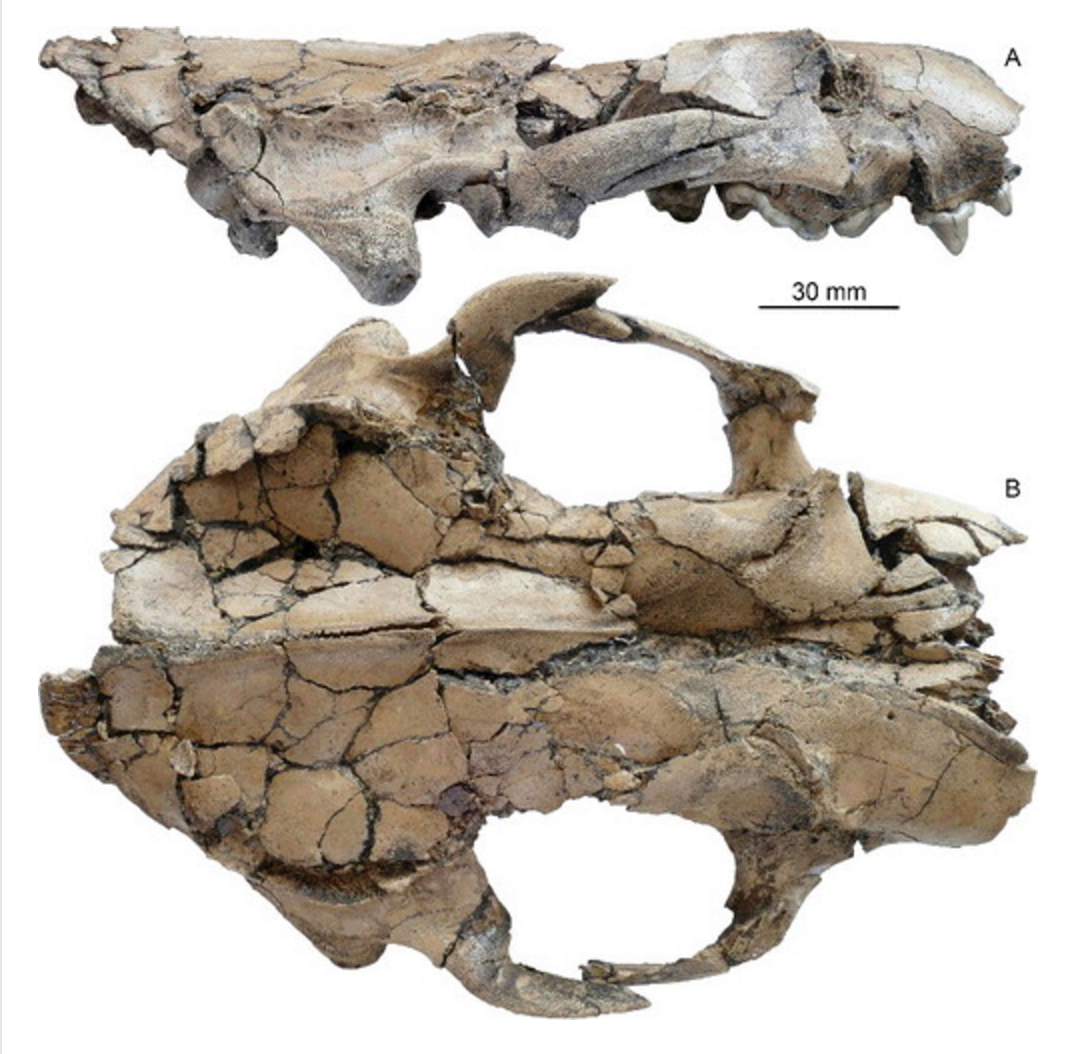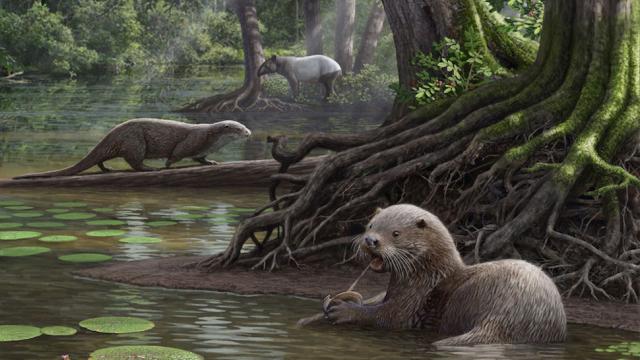Palaeontologists working in China have uncovered the fossilised remains of a previously unknown species of ancient otter. Weighing 50kg, these fearsome predators were among the largest otters to have ever lived.
Giant otters prowled around the shallow, swampy waters of ancient China. (Image Mauricio Antón)
The otter family dates back over 18 million years, but not much is known about these semi-aquatic creatures owing to the poor fossil record. Only a few ancient species are known, identified from isolated bits of teeth found in Thailand.
The recent discovery of a complete skull and mandible, along with the partial skeletons of three individuals, is offering an unprecedented glimpse into the evolution of these animals. The remains were discovered by American palaeontologists who were working at the Shuitangba Site in northeastern Yunnan Province in southwest China, in what used to be an ancient lakebed.
As described in the latest edition of Journal of Systematic Paleontology, these ancient otters lived about 6.2 million years ago and weighed about 50kg, which is about the size of a wolf — and twice the size of the largest living otters.
The giant otters featured large, powerful jaws, and enlarged bunodont (rounded, cusped) teeth, characteristic of other otter lineages. These otters, now dubbed Siamogale melilutra, likely swam around the shallow, swampy waters of ancient China, hunting for clams and other shellfish. And like modern otters, they probably used their powerful teeth to crack molluscs.

Image: X. Wang et al., 2017
Using CT scans, a research team led by Denise Su from the Cleveland Museum of Natural History created a digital reconstruction of the skull and mandible, revealing both otter-like and badger-like characteristics. The name itself, melilutra, combines the Latin names for badger (meles) and otter (lutra).
“While the cranium is incredibly complete, it was flattened during the fossilisation process,” said Su in a statement. “The bones were so delicate that we could not physically restore the cranium. Instead, we CT-scanned the specimen and virtually reconstructed it in a computer.”
Looking ahead to future research, the scientists would like to understand why these otters grew so large, and how these semi-aquatic predators were able to move on land given their size.
